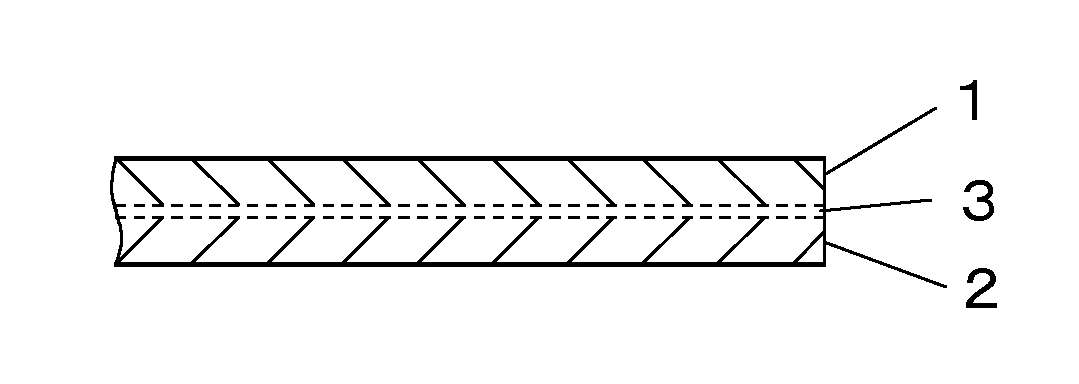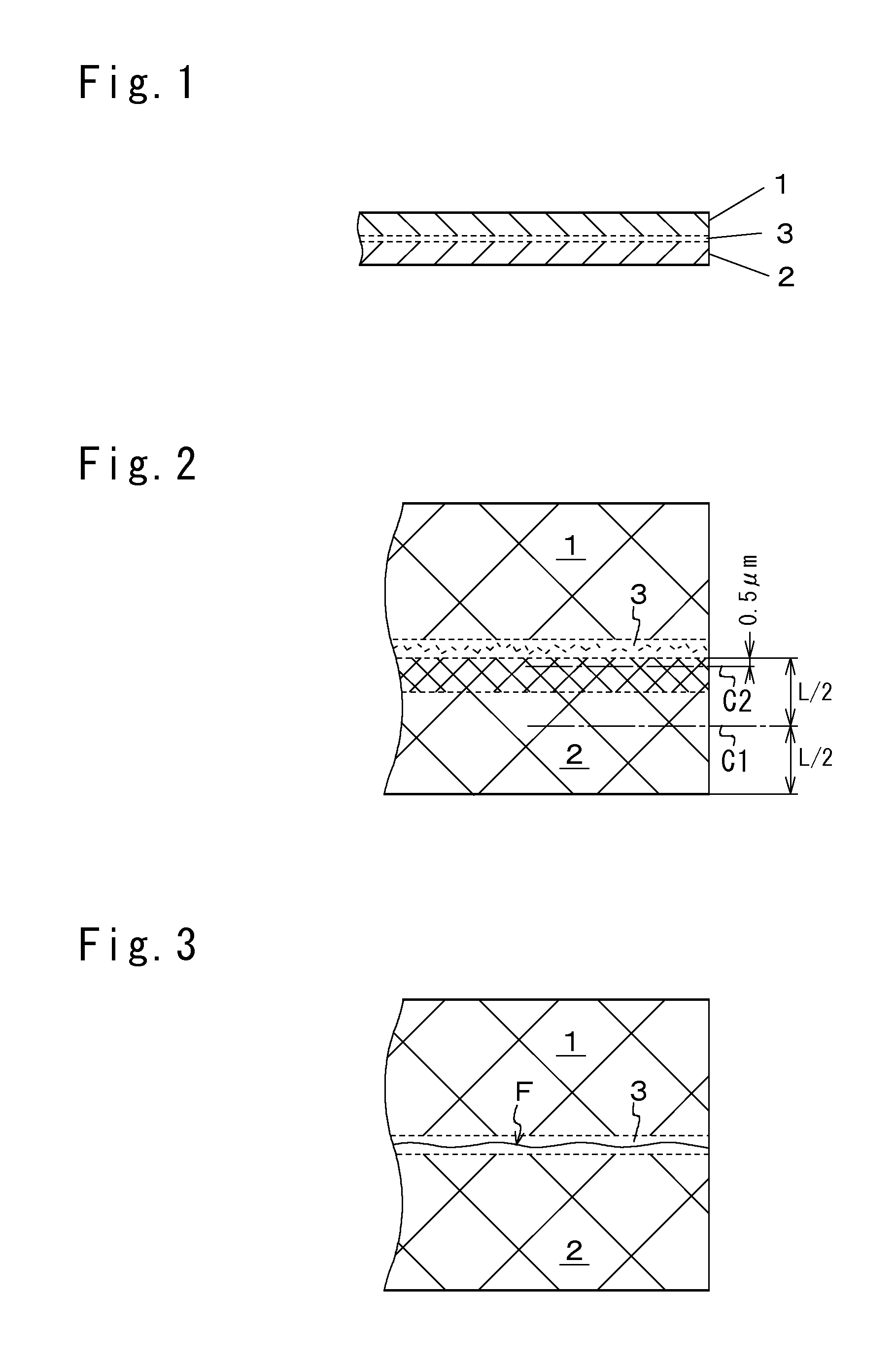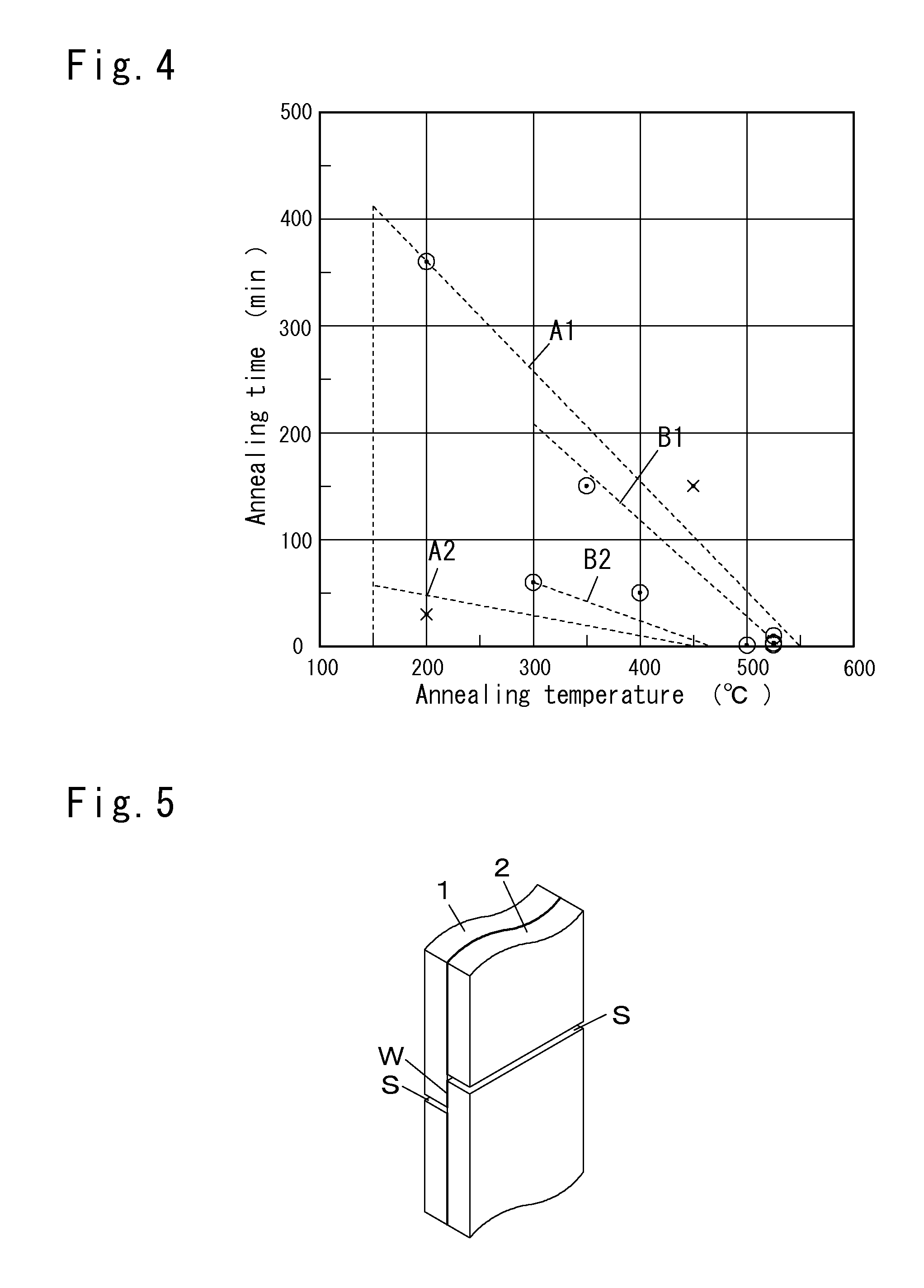Aluminum copper clad material
a technology of aluminum copper and clad material, which is applied in the direction of heat treatment equipment, furnaces, soldering equipment, etc., can solve the problems of deterioration of bonding strength between aluminum and copper layers, insufficient bonding strength, and difficulty in controlling the thickness of intermetallic compound layers, etc., to achieve good electrical conductivity, shorten the annealing time, and enhance productivity
- Summary
- Abstract
- Description
- Claims
- Application Information
AI Technical Summary
Benefits of technology
Problems solved by technology
Method used
Image
Examples
examples
[0047]Aluminum plates and copper plates shown in Table 1 were provided as raw plates, and each plate was completely annealed by being retained for 3 minutes at a temperature of about ¾ of its melting point. Some of the completely annealed aluminum plates and copper plates were subjected to cold rolling at a rolling reduction of about 10% to about 70% to variously set the average surface hardnesses of the surfaces on the pressure-welded side of these plates. Then, aluminum plates and copper plates as annealed or after being rolled were stacked and then pressure-welded through rolls, thus yielding pressure-welded materials having a plate thickness of about 2.0 mm. The aluminum plates and copper plates before being pressure-welded each had a thickness of about 2.0 mm and a plate width of about 50 mm, and thus the rolling reduction during pressure welding was about 50%.
[0048]For each clad material sample, the materials of the raw plates (aluminum plates and copper plates) and the averag...
PUM
| Property | Measurement | Unit |
|---|---|---|
| average crystal grain size | aaaaa | aaaaa |
| thickness | aaaaa | aaaaa |
| thickness | aaaaa | aaaaa |
Abstract
Description
Claims
Application Information
 Login to View More
Login to View More - R&D
- Intellectual Property
- Life Sciences
- Materials
- Tech Scout
- Unparalleled Data Quality
- Higher Quality Content
- 60% Fewer Hallucinations
Browse by: Latest US Patents, China's latest patents, Technical Efficacy Thesaurus, Application Domain, Technology Topic, Popular Technical Reports.
© 2025 PatSnap. All rights reserved.Legal|Privacy policy|Modern Slavery Act Transparency Statement|Sitemap|About US| Contact US: help@patsnap.com



